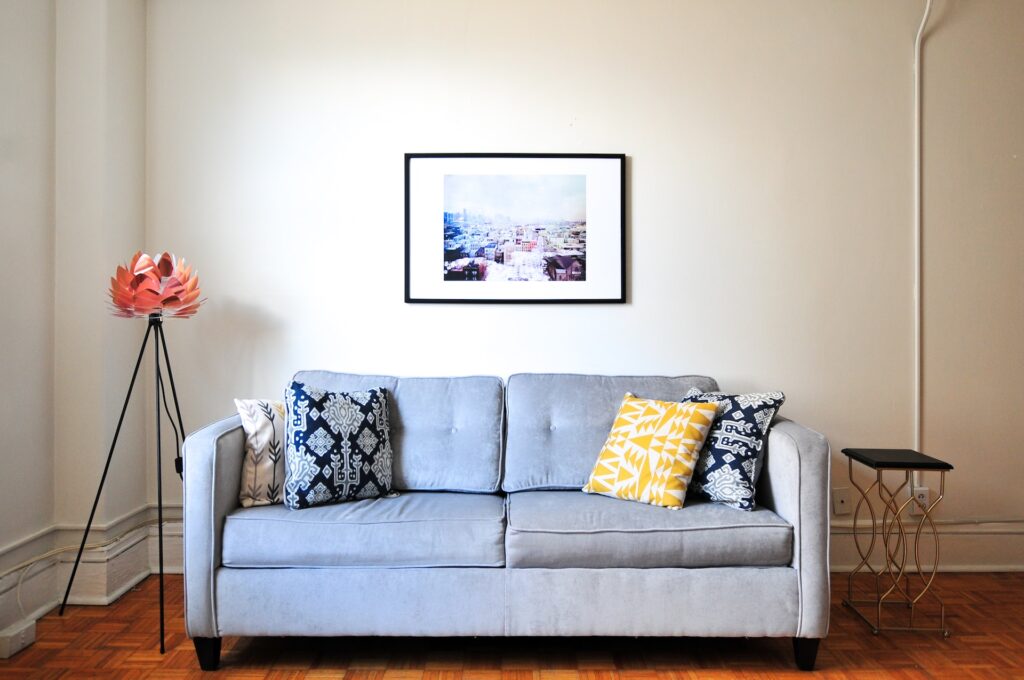When it comes to maintaining the beauty and comfort of your home, one of the often-overlooked aspects is the interior paint. Over time, the once-vibrant colors that adorned your walls may start to lose their luster, and signs of wear and tear become increasingly evident.

Signs Your Home’s Interior Needs Repainting
- Fading and Discoloration
One of the most noticeable signs that your interior needs repainting is fading and discoloration. Overexposure to sunlight can gradually bleach and fade the colors on your walls. Aging paint is also susceptible to discoloration, losing its original vibrancy over the years.
- Cracks and Peeling
Cracks and peeling paint can be attributed to various factors, including moisture damage and the use of poor-quality paint. Moisture infiltration can cause paint to bubble and peel, making your walls look unsightly.
- Stains and Marks
Stubborn stains and marks can accumulate over time, no matter how careful you are. Whether it’s from accidents, spills, or everyday wear and tear, these imperfections can detract from the overall appearance of your home.
- Outdated Color and Style
As design trends evolve, your once-fashionable interior colors may become outdated. Additionally, your personal taste may change over time, making your current interior decor less appealing.
Factors to Consider Before Repainting
Before grabbing your paintbrush, there are several crucial factors to consider:
- Budget
Repainting can be a significant investment, so it’s essential to set a budget that encompasses all the necessary supplies and labor costs.
- Time Commitment
Repainting your interior is a time-consuming task, and you’ll need to plan accordingly. Consider how much time you can dedicate to this project and whether you’d prefer to do it all at once or tackle it room by room.
- Color Choice
Choosing the right color is crucial. Consider the mood and ambiance you want to create in each room, as well as how different colors may affect the perception of space.
- DIY vs. Hiring Professionals
Decide whether you want to take on the project yourself or hire professionals. While DIY can be cost-effective, professionals bring experience and expertise to ensure a flawless finish.
- Necessary Preparations
Proper surface preparation is key to a successful paint job. This includes cleaning the walls, repairing any damage, and applying a suitable primer.
- Choosing the Right Type of Paint
Consider the type of paint that suits your needs best, whether it’s water-based or oil-based. Additionally, opting for low-VOC (volatile organic compounds) paints can be beneficial for indoor air quality.
Benefits of Repainting Your Home’s Interior
Repainting your home’s interior offers numerous benefits:
- Improved Aesthetics: Fresh paint instantly revitalizes a space, making it look clean, vibrant, and well-maintained.
- Enhanced Mood and Ambiance: Choosing the right colors can set the tone for each room, creating a more inviting and comfortable atmosphere.
- Increased Property Value: A well-maintained interior can boost your home’s resale value, making it a more attractive prospect to potential buyers.
- Protection Against Damage: Paint acts as a protective barrier against moisture and wear, helping to prevent damage to your walls.
- Health Benefits: Repainting can eliminate allergens and odors, contributing to a healthier indoor environment, especially when using low-VOC paints.
Conclusion
Repainting your home’s interior can breathe new life into your living space. By recognizing the signs that it’s time for a refresh, carefully planning the project, and following the proper steps, you can achieve professional-quality results and enjoy the benefits of a beautifully painted interior for years to come.